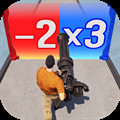Clash Of Clans Dragons Detailed Guide - Theria Games

Introduction to Clash of Clans Dragons Detailed Guide
The Dragon is a powerful flying unit in Clash of Clans, unlocked at Barracks level 9 and requiring Town Hall level 7. Known for its high health and damage, the Dragon is versatile. It can attack both ground and air targets. Its ranged attacks deal splash damage, making it effective against groups of enemies. Although Dragons don’t have a preferred target, they will prioritize the nearest building unless enemy troops are in range, at which point they’ll switch to attacking those. When deployed effectively, Dragons can be challenging to defend against, especially when paired with other troops or strategic spells.
Synergies
Rage Spell:
The Rage Spell is an essential component when using a pure Dragon army. Dragons are slow-moving, but they deal a significant amount of damage per attack. The Rage Spell boosts their damage output and attack speed, allowing them to quickly clear enemy defenses. This synergy is especially valuable when Dragons are deployed in the core of a base, where they can take down critical structures and defenses. By casting the Rage Spell at the right moment, you can dramatically increase the efficiency of your Dragon army, helping to secure a faster victory.Balloons:
Pairing Dragons with Balloons creates a powerful synergy in aerial attacks. Dragons act as tanks, absorbing damage from defenses like Air Defenses and Wizard Towers, allowing the Balloons to target and destroy key defensive buildings. The Balloons are particularly useful for activating Seeking Air Mines, which might otherwise pose a threat to Dragons. This combination works well when dealing with well-protected Air Defenses, as the Balloons can clear out potential threats while the Dragons focus on other targets.Dragon Riders:
The “Hydra” strategy utilizes both Dragons and Dragon Riders, creating a versatile and powerful combination. Dragon Riders serve as tanks, targeting and dealing with enemy defenses, while the Dragons focus on taking out Clan Castle troops or Skeletons. This strategy capitalizes on the strengths of both units—Dragon Riders’ ability to target defensive structures and Dragons’ ability to deal with high-value units. The synergy between Dragons and Dragon Riders enables a more effective push into the core of enemy bases, allowing for a greater chance of success in raids.Haste Spell:
If time is a concern or if a fast-paced attack is needed, the Haste Spell can be a game-changer. It significantly increases the movement speed of Dragons, allowing them to cover more ground and reach key areas of the base faster. This is especially useful when launching a frontal assault, where Dragons need to quickly push through enemy defenses and into the heart of the base. The Haste Spell is particularly helpful when combined with a spread deployment strategy, ensuring that Dragons converge quickly in the center of the base, where they can take full advantage of their high damage potential.General Characteristics:
🔹Attack Type: The Dragon’s attack is a ranged splash damage attack, which can strike multiple units or buildings in its path. This makes Dragons particularly effective when facing groups of enemy troops or defending structures clustered together. They can also damage walls if there are ground units near them, allowing them to be used in various situations.
🔹Targeting: Dragons have no specific targeting preferences, meaning they will attack the closest building by default. However, if enemy Clan Castle troops, heroes, or Skeleton Trap skeletons are in range or target the Dragon, it will switch its focus to those units. Once these threats are dealt with, the Dragon will return to attacking the nearest building.
🔹Movement: As a flying unit, Dragons are unaffected by walls, which grants them the ability to navigate freely over structures that would otherwise block ground troops. This mobility makes them especially useful for attacking bases with well-placed walls, as they can bypass those obstacles to target key defenses and buildings.
🔹Health and Damage: Dragons are known for their high health, allowing them to withstand a considerable amount of damage before being eliminated. They also deal substantial damage with their attacks, making them powerful offensive units when used strategically. This combination of durability and offense makes the Dragons a core component in many air attack strategies.
Offensive Strategies
Air Defense Priority:
Eliminating Air Defenses and Air Sweepers is a key strategy when deploying Dragons in an attack. These defenses are the primary counters to air units, and without them, Dragons can freely roam the base, dealing massive damage to structures. It’s important to target these defenses early on in the attack to reduce the risk of losing Dragons to enemy Air Defenses.
To achieve this, you can deploy a variety of units and spells to neutralize the threat. For example, using other air troops such as Balloons or Minions can help clear out Air Defenses. Spells like Lightning Spells or Earthquake Spells can directly damage and destroy these defenses from a distance, making them easier to eliminate. The Archer Queen’s Giant Arrow is another useful tool to take down Air Defenses, as her long-range attack can reach distant defensive buildings.
Once the Air Defenses and Air Sweepers are neutralized, Dragons will be free to focus on the remaining structures without interference, allowing them to deal more damage and increase the chances of a successful attack. Prioritizing these defensive buildings is critical for maximizing the effectiveness of Dragons in any air-based strategy.
Corner Buildings:
Corner buildings can often cause Dragons to veer off course during an attack, wasting valuable time and potentially leaving the attack unfinished. To prevent this, it’s important to plan for these buildings in advance. By deploying cleanup troops such as Barbarians, Minions, or Archers, you can eliminate these structures quickly and keep your Dragons focused on the core of the base.
Barbarians are useful for corner buildings because they are inexpensive and can quickly take down buildings on the outer edges. Minions, being air troops, can target corner buildings without having to worry about ground defenses, and they are especially effective when you need to clear buildings quickly. Archers are another good option, as they can hit both ground and air structures from a distance, and they also offer a cost-effective solution for clearing corner buildings.
Using these cleanup troops ensures that your Dragons stay on track, eliminating the risk of them diverging toward less important structures. This strategy helps to maximize the overall effectiveness of your Dragon attack, ensuring that the main offensive force stays focused on high-priority targets in the center of the base.
Rage Spells:
Rage Spells are highly effective when used with Dragons because of their slow movement speed and high damage output. Dragons, being powerful but relatively slow attackers, benefit greatly from the speed boost provided by Rage Spells. The increased attack speed allows them to deal more damage in a shorter amount of time, significantly improving their overall effectiveness during an attack.
Since Dragons are flying units, they do not have to deal with the constraints of walls, which can often slow down ground-based units. This makes Rage Spells even more valuable, as they can quickly boost the Dragons’ attack speed while they fly unhindered over the walls and directly target key defenses and structures. By placing a Rage Spell strategically near a group of Dragons, you can maximize their damage output, especially when they are targeting high-priority defenses like Air Defenses or Clan Castle troops.
Using Rage Spells effectively allows you to break through key sections of the base faster, enabling your Dragons to deal more damage and potentially secure a quicker three-star victory. The combination of high damage and increased speed makes Rage Spells one of the best tools for optimizing Dragon-based attacks.
Spread Deployment:
Spread Deployment is an effective strategy for Dragon attacks, especially when you’re aiming to control the pathing of your Dragons and maximize their damage output. By deploying Dragons along the edges of the base, you can ensure they move inward toward the core of the base. This approach works well because it allows your Dragons to funnel into the middle, where they can concentrate their firepower on key defenses and structures.
Once the Dragons are gathered in the center, placing a Rage Spell on them can significantly boost their attack speed and damage. The concentrated damage from the Rage Spell can quickly eliminate high-priority targets like Air Defenses, defending heroes, and splash-damage defenses, making it easier for the rest of your army to clean up the base.
The spread deployment tactic also helps minimize the risk of the Dragons spreading out too far and attacking buildings in different directions. By guiding them toward the center, you keep them focused, which is especially helpful in controlling the attack and ensuring maximum efficiency in dealing with the base’s defenses.
Dragon and Balloon Combo:
The Dragon and Balloon combo is a powerful and synergistic strategy that leverages the strengths of both troops to maximize attack efficiency. Dragons, with their high health and splash damage, can absorb a significant amount of damage from Air Defenses, Wizard Towers, and other defensive structures. This makes them an ideal tank to draw fire away from more vulnerable units like Balloons.
Meanwhile, Balloons target defensive buildings and can trigger Seeking Air Mines, clearing potential threats before they reach the Dragons. This allows the Dragons to continue dealing damage while Balloons clear out key defenses. Additionally, the Balloons’ targeting of Defensive Buildings, like Air Defenses, Mortars, and Archer Towers, weakens the enemy’s defenses and provides greater support for the Dragons to push through.
The synergy between the Dragons and Balloons increases the overall survivability of both units. As the Dragons focus on taking the brunt of the damage, Balloons can deal high damage to remaining structures without drawing as much fire. This combination is particularly effective when timed correctly, as it enables the Dragons and Balloons to complement each other and clear bases with powerful, sustained damage.
Hydra Strategy:
The Hydra strategy is a highly effective combination of Dragons and Dragon Riders, capitalizing on the strengths of both units to create a balanced, destructive force. In this strategy, Dragon Riders serve as the primary tank, absorbing the majority of the damage from enemy defenses such as Air Defenses, Wizard Towers, and Archer Towers. With their high damage output and ability to target defensive buildings, Dragon Riders push through the outer layers of the base, clearing the path for Dragons to wreak havoc on the interior.
Dragons, with their splash damage and ability to target both air and ground units, play a supporting role in this strategy. They can focus on neutralizing enemy Clan Castle troops, Skeleton Traps, or any other remaining units while the Dragon Riders deal with the more formidable defenses. As the Dragon Riders tank damage and clear defenses, Dragons can unleash their splash damage to devastate clustered enemy troops or buildings, weakening the core defenses of the base.
The synergy between Dragons and Dragon Riders in the Hydra strategy allows for a balanced approach, combining strong offensive power with effective tanking. While Dragon Riders clear the path and target defensive structures, Dragons take care of Clan Castle threats and contribute their splash damage to decimate the rest of the base. This strategy is particularly powerful when you want to tackle a base with a lot of air defenses, as the Dragon Riders will absorb the hits while the Dragons continue to clear out the core and secondary defenses.
Countering Clan Castle Troops:
Countering Clan Castle troops with Dragons involves a strategic approach to effectively neutralize enemy reinforcements while maximizing the Dragons’ offensive capabilities. To start, you can use a few smaller, disposable troops, such as Barbarians or Archers, to lure out the Clan Castle troops. Deploying these units at the edges of the base or in corners will attract the enemy troops to a more controlled area, preventing them from spreading out or overwhelming your forces.
Once the Clan Castle troops are drawn out and grouped, you can deploy your Dragons to target them. The Dragons’ splash damage ability allows them to quickly eliminate clustered units like Archers, Wizards, or even more dangerous troops like Dragons or Balloons. Since Clan Castle troops often lack high health compared to defensive buildings, Dragons can wipe them out efficiently, clearing the path for your main force to continue their attack.
This tactic works particularly well when the Clan Castle contains high-damage troops like enemy Dragons or defensive Archers that could otherwise distract or damage your main army. By using Dragons to eliminate these threats, you ensure that they won’t interfere with the main assault, allowing your core troops to focus on the base’s defenses without interruption.
Mass Dragon Raids:
Mass Dragon raids can be an effective strategy when deployed correctly, but there are a few considerations to ensure maximum success. One of the key challenges with this approach is dealing with corner buildings, which can distract Dragons and cause them to waste valuable time circling the map instead of attacking key structures. Since Dragons have slow movement speed, corner buildings can significantly delay their progress and result in less efficient attacks.
To prevent this, it’s important to use cleanup troops or Heroes to take out these corner buildings. Small units like Barbarians, Archers, or even Minions can be used to clear these buildings quickly, ensuring that your Dragons stay on track and maintain their momentum. In addition, deploying Heroes like the Archer Queen or Barbarian King at the edges of the base can help draw attention away from the Dragons while taking care of those distant structures.
Another useful tactic is to incorporate Haste Spells in the raid. Since Dragons are slow-moving units, Haste Spells can significantly speed up their travel time, allowing them to get to key targets faster and focus their attacks on high-value buildings like defenses and storages. Combining this with proper troop placement and cleanup efforts will help optimize the effectiveness of a mass Dragon raid and increase your chances of a successful three-star attack.
Defensive Strategies
Air Defense Placement:
Air Defense Placement is crucial when defending against Dragons. To minimize their effectiveness, it’s best to spread Air Defenses throughout the base. This ensures that they cover a larger area, making it harder for Dragons to focus on one particular defense. Protecting these Air Defenses with storage buildings or other high hitpoint structures adds an extra layer of defense, making it more difficult for Dragons to take them down quickly. If Air Defenses are clustered together, they become more vulnerable to spells like Rage Spells, Earthquake Spells, and Lightning Spells, which can deal massive damage to multiple defenses at once.
Clan Castle Troops:
Dragons can also be used effectively as Clan Castle troops, particularly at lower Town Hall levels where they can wreak havoc on enemy ground troops. Due to their high health, splash damage, and immunity to most ground-targeting units, they can be a powerful defense. However, their slow attack speed can be a drawback when facing large groups of Archers, Wizards, or other fast-moving troops. At higher Town Hall levels, Dragons may not be as effective, as they can be countered by a wide range of higher-tier troops or spells.
Air Sweepers:
Air Sweepers are another important component of anti-Dragon defenses. These devices push back air units, delaying Dragons’ movements and making it harder for them to concentrate on attacking key defenses. Proper placement of Air Sweepers is essential for maximizing their effectiveness. However, they can be vulnerable to Earthquake and Lightning Spells, which can damage both Air Defenses and Air Sweepers simultaneously. Therefore, careful placement and protection of these defenses are necessary to ensure they function optimally.
Frequently Asked Questions (FAQs)
❓What is the best way to use Dragons in Clash of Clans?
Dragons are powerful air units that deal splash damage, making them ideal for wiping out clustered defenses and buildings. A common strategy is the “Mass Dragon” attack, often paired with Balloons (in a DragLoon composition) or backed by Lightning Spells to take out Air Defenses early. To get the best value, funnel your Dragons carefully and aim for a path through the core of the base.
❓When do you unlock Dragons in Clash of Clans?
Dragons become available once you reach Town Hall 7 and upgrade your Barracks to level 9. This is a major milestone in the game, as Dragons dominate in TH7 and TH8 war and farming strategies due to their high hitpoints and splash damage.
❓What’s the difference between Dragon and Electro Dragon?
The standard Dragon deals consistent splash damage to one target area, while the Electro Dragon, unlocked at TH11, has chain lightning that hits up to five targets in a line. Electro Dragons are slower but can clear sections of a base much faster if buildings are lined up correctly.
❓Are Dragons still effective at higher Town Halls?
While Dragons dominate the mid-levels (especially TH7 to TH9), they become less viable as standalone troops in higher Town Halls. At TH10 and above, they are often used in hybrid or support roles. Super Dragons, Electro Dragons, or Dragon Riders become more favored in higher-level attack strategies.
❓Should I upgrade Dragons or Electro Dragons first?
If you’re an active war player or rely heavily on air attacks, upgrading Dragons first at TH7 to TH10 provides immediate offensive strength. At TH11 and above, Electro Dragons tend to offer more utility in war attacks and are usually prioritized, especially for Electro Dragon spam or hybrid air strategies.













